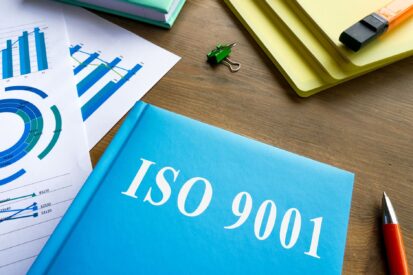The ISO 27001 standard for information security management systems (ISMS) is a highly reputable benchmark for organisations of all sizes worldwide. For Australian small and medium-sized enterprises (SMEs), achieving ISO 27001 certification not only demonstrates a commitment to protecting sensitive data but also enhances your competitive advantage and helps build trust with customers, partners, and regulators.
However, the journey towards certification can be a challenging undertaking, demanding the right guidance, resources, and support to ensure success.
This comprehensive guide will walk you through the ISO 27001 certification process, outlining key steps, strategies, and recommendations for Australian SMEs to effectively navigate the nuances of compliance and certification.
To secure your business’s information assets and achieve optimal information security management, it’s crucial to understand the structure and requirements of the ISO 27001 standard, as well as how to efficiently implement an ISMS that aligns with your organisation’s goals, risk appetite, and growth strategies.
From preparing an initial gap analysis to selecting a certification body, we will delve into critical milestones in the certification journey that your business must tackle with diligence and expertise.
Our aim is to provide you with the knowledge and practical insights to embark on your ISO 27001 certification journey confidently, ensuring that your organisation can maximise the benefits of this prestigious security management standard. With a tailored, structured, and thoughtful approach, Australian SMEs can leverage ISO 27001 certification as a powerful tool to bolster information security, gain a competitive edge, and foster long-lasting relationships with stakeholders.
Conduct a Gap Analysis to Identify Areas for Improvement
The first step in navigating the ISO 27001 certification process is to conduct a gap analysis, which provides a clear understanding of your organisation’s current information security posture. Through this analysis, your Australian SME can identify gaps in its existing practices compared to ISO 27001 requirements. Key elements of a comprehensive gap analysis include:
- Document Review: Assess your existing policies, procedures, and records to ensure they align with ISO 27001 requirements and form a solid foundation for your ISMS.
- Risk Assessment: Evaluate your current risk assessment process, ensuring that it meets ISO 27001 guidelines and covers all relevant aspects of your organisation’s information security.
- Controls Evaluation: Assess the effectiveness of your current information security controls and compare them to the ISO 27001 Annex A control set.
- Remediation Planning: Develop a thorough plan outlining the actions required to close identified gaps and achieve compliance with ISO 27001 requirements.
Develop and Implement Your ISO 27001-Compliant ISMS
Following the gap analysis, your SME must develop and implement an ISMS that complies with ISO 27001 standards. Establishing a robust ISMS involves these key steps:
- Define ISMS scope: Outline the boundaries of your ISMS, including the information assets, business processes, and organisational units it will encompass.
- Develop an Information Security Policy: Create a high-level policy that reflects your organisation’s commitment to ISMS implementation and maintenance, aligned with both ISO 27001 requirements and your business objectives.
- Perform a Risk Assessment: Conduct a comprehensive risk assessment to identify, analyse, and evaluate information security risks within your organisation, following a consistent and documented methodology.
- Select and Implement Controls: Based on the risk assessment outcomes, select and implement a set of controls from ISO 27001 Annex A to address identified risks and comply with any legal or regulatory requirements.
- Develop Supporting Documentation: Create a suite of documents to support the ISMS, including policies, procedures, guidelines, and records demonstrating control effectiveness and compliance with the standard.
Monitor, Review, and Improve Your ISMS Continuously
ISO 27001 emphasises the importance of continuous ISMS improvement, requiring organisations to monitor, review, and adapt their information security practices regularly. Key actions for achieving ongoing ISMS enhancement include:
- Regular Audits: Perform internal audits to assess the ISMS’s effectiveness, identify nonconformities, and evaluate compliance with ISO 27001 requirements.
- Management Review: Conduct periodic management reviews to ensure leadership involvement in ISMS planning, resource allocation, and decision-making.
- Corrective Actions: Implement corrective actions in response to audit findings, incidents, or identified areas of improvement, continually refining your ISMS and enhancing its effectiveness.
- Performance Measurement: Establish, measure, and analyse key performance indicators to gauge the success of your ISMS and identify opportunities for ongoing optimisation.
Choose an Accredited Certification Body for External Audit
Once your SME has developed and implemented an ISO 27001-compliant ISMS, you must select an accredited certification body to conduct an external audit. During this process:
- Verify Accreditation: Research and select a reputable certification body that holds accreditation from a recognised authority, such as the Joint Accreditation System of Australia and New Zealand (JAS-ANZ).
- Conduct a Stage 1 Audit: Undergo an initial audit to verify the adequacy of your ISMS documentation and ensure its compliance with ISO 27001 requirements.
- Stage 2 Audit: Engage in a comprehensive on-site audit where the certification body evaluates the implementation and effectiveness of your ISMS, confirming that it fulfils ISO 27001 standards.
- Address Nonconformities: If the certification body identifies any nonconformities, you must take appropriate corrective actions and provide evidence of their resolution.
- Receive Certification: Once the audit process is successfully completed, your SME will receive ISO 27001 certification, which remains valid for three years, subject to ongoing surveillance audits.
A Strategic Approach to ISO 27001 Certification for Australian SMEs
Achieving ISO 27001 certification for your Australian SME may appear daunting at first, but by following a structured, strategic approach, your organisation can successfully navigate the process and reap substantial benefits. With a better understanding of the certification journey, you can now confidently embark on this path to information security excellence, strengthening your information security posture, fostering trust among your stakeholders, and elevating your business’s competitive edge. Begin your journey towards ISO 27001 certification today and unlock the potential for enhanced security, compliance, and growth for your Australian SME.
Ready to take your Australian SME to the next level with ISO 27001 certification? Contact our expert ISO 9001 consultants today for guidance and support. We’ll help you navigate the certification process, ensuring that your business meets the necessary regulatory requirements and industry standards. With our comprehensive solutions, you’ll be well-equipped to protect your data and safeguard your business operations. Contact us now to learn more about our ISO certification in Australia and start your journey towards success.








Users Comments
Get a
Quote